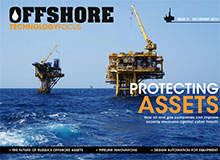
The cyber attack on Saudi Aramco in August is the latest in a growing number of cybercrimes against the oil and gas industry. As contracts and technology grow in value and hackers are becoming more attracted to inside information, we investigate how the sector can defend its assets.
We also explore material and technology breakthroughs that are helping to improve the safety of offshore pipelines while reducing ongoing costs, and ask offshore security specialists about best practice for protecting facilities at sea and on shore.
Moreover, we take a look at the specialist design, construction and transport for Petrobras’ new P-55 mega platform and we also speak to Drum Cussac’s maritime and offshore vice president, David Pickard, about why onshore security is essential for offshore work.
Click here to read your free copy.
In this issue
World of Possibilities
The heavy reliance of key Asian nations on oil and gas imports is prompting the national oil companies of these countries to expand their overseas operations. GlobalData reports.
Read the full article here.
How well do you really know your competitors?
Access the most comprehensive Company Profiles on the market, powered by GlobalData. Save hours of research. Gain competitive edge.

Thank you!
Your download email will arrive shortly
Not ready to buy yet? Download a free sample
We are confident about the unique quality of our Company Profiles. However, we want you to make the most beneficial decision for your business, so we offer a free sample that you can download by submitting the below form
By GlobalDataThe Cyber Threat
Saudi Aramco’s cyber attack in August 2012 is the latest in a number of cybercrimes against the offshore industry. Cybercrime forensics chair Denis Edgar-Nevill tells Offshore Technology Focus how the sector can defend its assets.
Read the full article here.
Securing Operations
As part of our special focus on cyber security, Andrew Glinter, director of industrial security at Waterfall Security Solutions, shares his views on the issue from an operations security point of view.
Read the full article here.
Taking Control
Russian government heads are at odds regarding the future of offshore oil assets and whether they should deal with foreign investors or maintain state control. We examine the implications of both scenarios.
Read the full article here.
Even Flow
Material and technological breakthroughs are helping to improve the safety of offshore pipelines while reducing ongoing costs. We profile five of the industry’s most promising pipeline innovations.
Read the full article here.
From Model to Machine
Researchers in Norway are using models to predict the performance of complex offshore materials handling equipment. We look at the project which aims to help designers pick components and, ultimately, to automate more of the design process.
Read the full article here.
In Need of Protection
Kidnapping and piracy are potential risks for companies operating in sensitive countries. Offshore Technology Focus asks Drum Cussac’s maritime and offshore vice president, David Pickard why onshore security is essential for offshore work.
Read the full article here.
Supersized Ambition
Petrobras is making the most of its massive pre-salt reserves by building huge production platforms. Edmilson Medeiros explains how the new P-55 platform, weighing in at 100,000t, requires specialist design, construction and transport techniques.
Read the full article here.
Kirinskoye Gas and Condensate Field
The Kirinskoye gas condensate field (GCF) is located 28km offshore of Sakhalin Island Shelf and is the first offshore field in Russia to use a subsea system for natural gas production.
Read the full article here.
Next issue preview
Attracting young talent has been a challenge for the oil and gas industry for many years. We find out how companies are training a new generation of skilled workers to secure the future of the industry.
We also profile Myanmar’s vast controversial offshore oil and gas industry which is on the verge of rapid expansion, and investigates challenges faced by the East African offshore oil and gas industry as it becomes one of the world’s biggest energy frontiers.
Moreover, we find out why the UN Law of the Sea treaty is integral to the US’ Arctic exploration plans, and we take a look at BP‘s reduced salinity water injection technology which is undergoing field testing at the £4.5bn Clair Ridge development on the UK Continental Shelf.
Sign up for your free subscription to get each future issue delivered directly to your inbox
Digital Magazine FAQ
The digital magazine is viewable on any computer with Flash Player installed. It is also viewable on mobile devices, iPhones and iPads, although some features and videos may be disabled.




